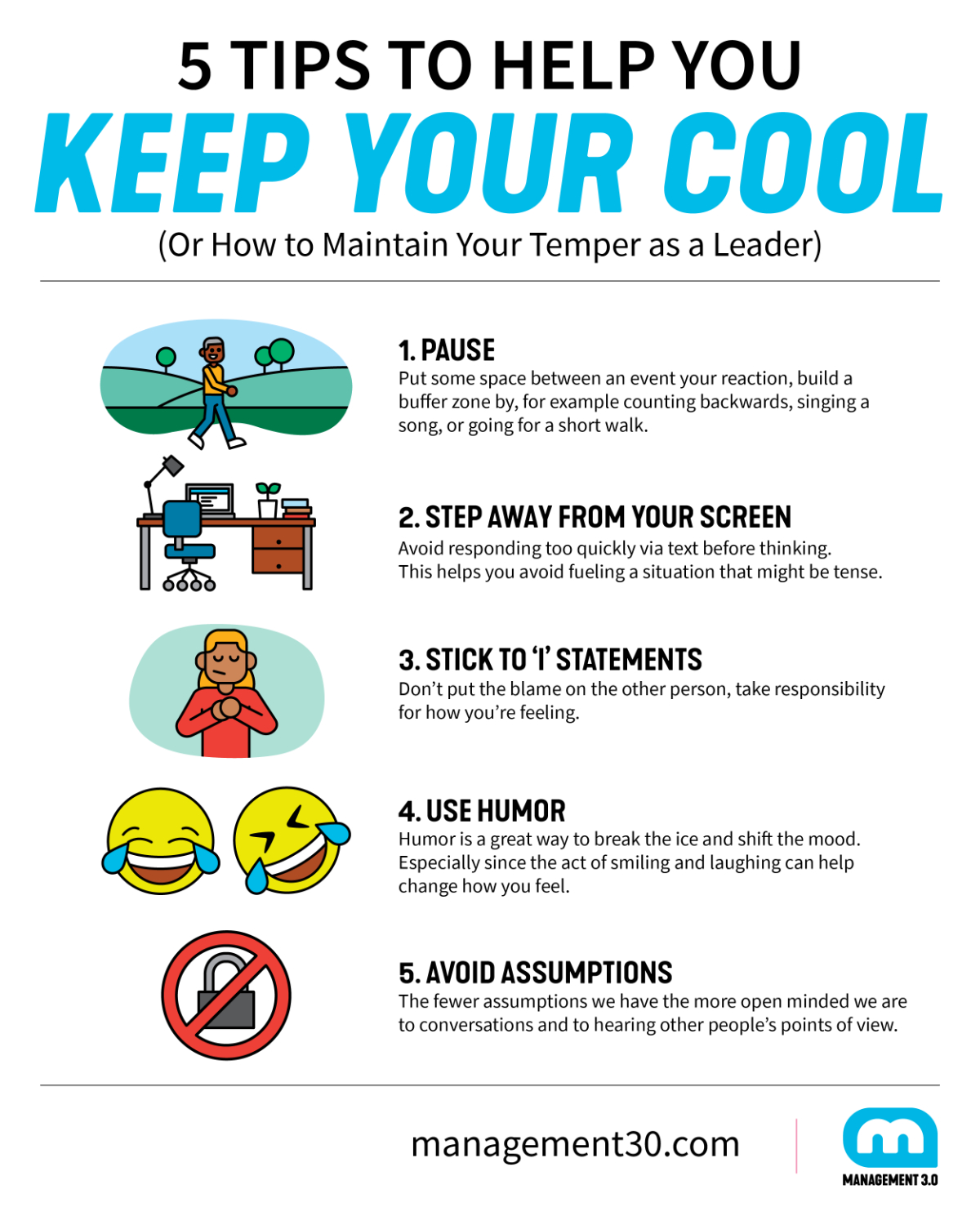by Sam at Management 3.0
No one likes working for someone that doesn’t treat them well. As leaders the job can often be stressful and you can end up juggling a lot of things. However, that doesn’t mean you can take out the frustration or angst, on those you work with. Learning to manage emotions and how maintain temper as a leader is key if you want to have a successful team and create a positive work culture and as a leaders it’s particularly important because people take their cues from you.
How can a leader maintain temper?
Managing emotion is part of having a strong emotional intelligence. The better able you are to identify and control the emotion rather than let the emotion control you, the better you can manage yourself and your teams. In this blog we’re going to delve into how to control one’s temper and quell anger, but we’re also going to highlight the positive side of anger because every emotion, no matter how negative it can appear, has a positive side to it.
The positive side of anger is action. If you’ve ever taken an emotional intelligence test and the results are that you have high anger, it means that you have a propensity for taking action.
Taking action can be seen as a positive and the emotion of anger can be harnessed to move forward and get things done. That is, if you don’t let it overtake you. When anger becomes too strong and isn’t reined in, it can be debilitating. They key is to use the positive parts of anger and not let the negative parts overtake you, which isn’t easy. That’s why we’re sharing a few tips in this blog about what it takes to temper your temper, so that your anger doesn’t get the best of you and so that you can be a more mindful leader.
How can a leader maintain temper? Build in a pause
One way to put some space between an event and how we react to it, is to build in a buffer zone. That can come in the form of a pause, where we don’t react immediately to something, but rather take time to decide how we want to respond. This helps diffuse stronger emotions that might want to burst through. The key is to remember to pause and there are various ways to do that. Some people try counting backwards, others sing a song, others walk around with a stress ball that they squeeze. Whatever it is, figure out a way to build in a pause between the incident and your reaction, it’s a great way to relax a situation, and calm your mind, emotions and nerves before responding.
Temper your temper as a leader: Step away from the phone/computer/tablet
We don’t realize it, but staring at a screen changes our mood and also makes it easier for us to lash out. If we are angry and chatting to someone on WhatsApp or email it’s easy to respond quickly before thinking, fueling a situation that might be tense. By putting down the phone and stepping away from the screen, it give us space, perspective and helps break the pattern of instantly responding, sometimes angrily, before we’ve had proper time to think about what we want to say.
How to maintain temper as a leader: Stick with ‘I’ statements
No matter how upset you are, don’t put the blame on the other person. Stick with statements that own your emotions, ones that begin with ‘I’, where you are taking responsibility for how you’re feeling. It’s OK to be upset, the important part is to recognize your involvement in what’s bothering you and not put it on anyone else. When you own the situation and your role in it, it can help lessen stress and frustration and buy you time to quell feelings of anger.
Way to temper your temper as a leader: Use humor
It might be the last thing on your mind when upset or feeling annoyed, but humor is a great way to break the ice and shift the mood. Even the act of smiling and laughing, when you don’t want to, can physically help change how you feel. When things get stressful try making light of it, without taking away from the seriousness of the situation. If you can smile or break frame and get the other person to laugh, it can help ease tensions and make it easier to lighten the intensity of a conversation, which makes it more productive.
How to maintain temper in leadership? Avoid assumptions
This is easier said than done as we all have assumptions, but if we can avoid assuming that we have the answers to things, it builds in an element of humility when dealing with people and situations and forces us to check our preconceived beliefs. By doing this, we’re forced to take a step back and recalibrate our emotions, which can help control our temper and change the way we think about a situation. The less assumptions we have, the more open minded we are to conversations and to hearing other people’s points of view. One way to catch ourselves if we’re assuming something is to look at step #1, and use that built in pause to ask if we’re assuming things or not.
How do you control your temper in your leadership role? Share thoughts with us below.
Header photo by Moose Photos from Pexels


